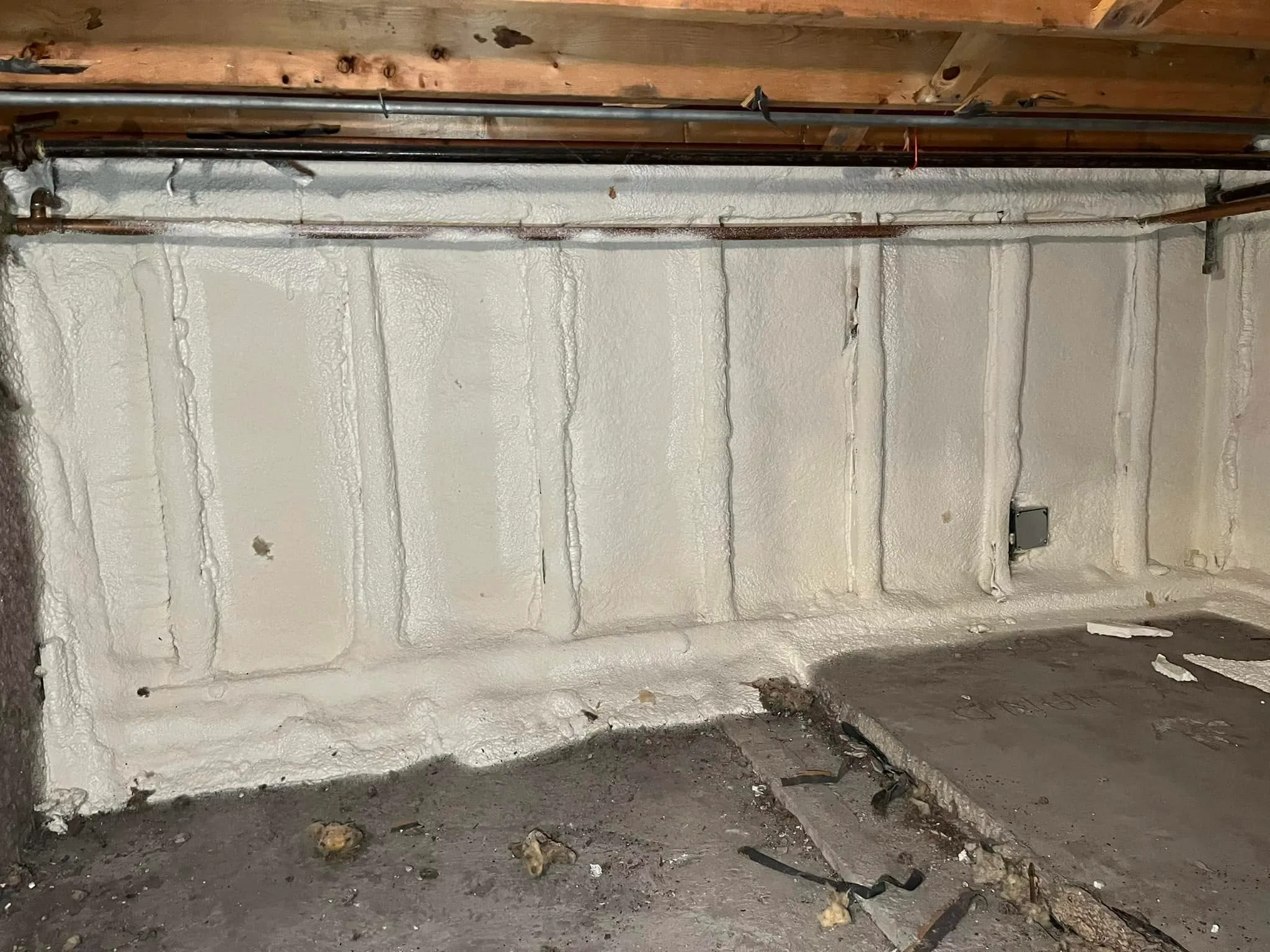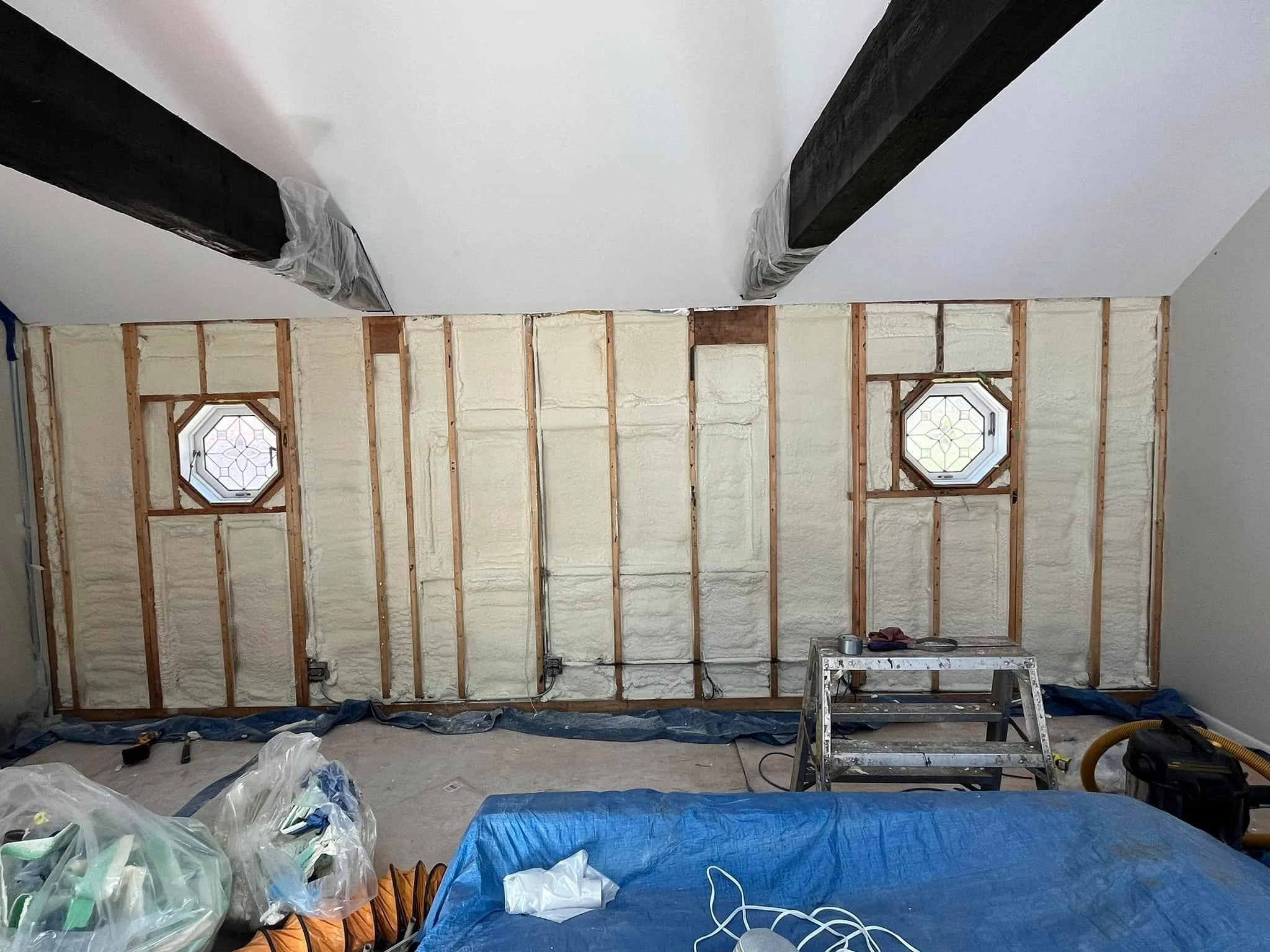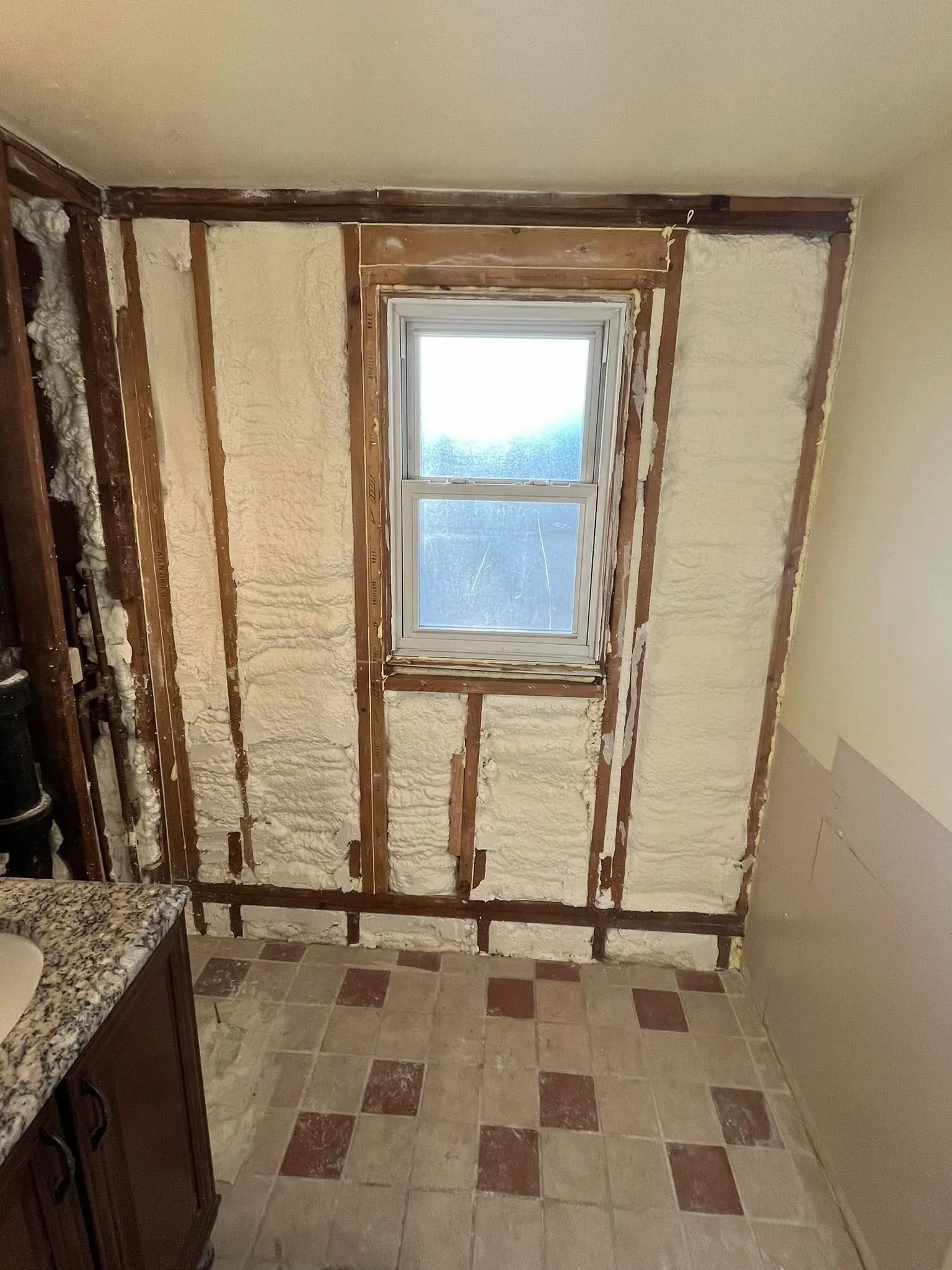
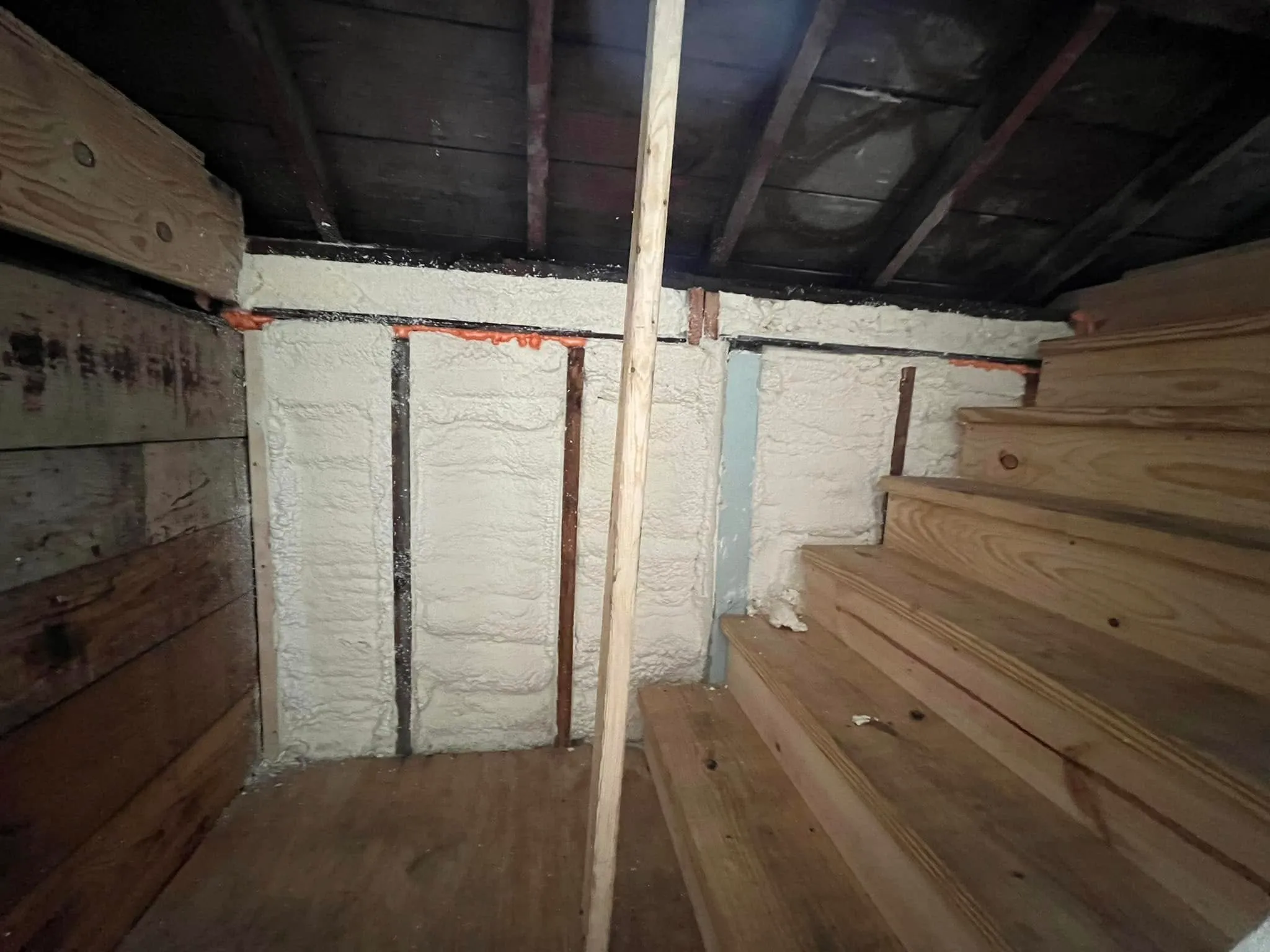
Spray foam insulation dramatically improves home air quality by creating an airtight seal that prevents outdoor pollutants, allergens, and moisture from entering your living space. This advanced insulation material blocks up to 99% of air infiltration compared to traditional insulation methods, effectively stopping dust, pollen, and airborne contaminants from compromising your indoor environment.
The technology works by expanding to fill every crack and crevice in your home’s envelope, creating a continuous barrier that standard insulation materials cannot achieve. Based on extensive field experience with residential applications, properly installed spray foam systems reduce indoor air pollution sources by eliminating uncontrolled air exchange that typically carries harmful particles into homes.
Most homeowners underestimate how significantly air leakage affects their indoor environment. Traditional insulation materials like fiberglass and cellulose allow substantial air movement, permitting outdoor contaminants to enter through gaps around windows, doors, electrical outlets, and structural joints.
According to the Environmental Protection Agency, indoor air can be 2-5 times more polluted than outdoor air, primarily due to inadequate sealing and ventilation systems. Uncontrolled air infiltration introduces vehicle emissions, industrial pollutants, pesticides, and biological contaminants directly into living spaces.
Bonus Tip: Monitor your home’s air exchange rate using a blower door test before and after spray foam installation. Properties with spray foam typically achieve air change rates below 3 ACH50, compared to 7-15 ACH50 in conventionally insulated homes.
Spray foam’s cellular structure expands up to 100 times its liquid volume, penetrating microscopic openings that other materials miss entirely. This expansion creates a seamless barrier that maintains its integrity for decades without settling or degrading.
| Air Sealing Performance Comparison | Spray Foam | Fiberglass | Cellulose |
|---|---|---|---|
| Air Leakage Reduction | 95-99% | 20-40% | 30-50% |
| Gap Filling Capability | Complete penetration | Minimal | Moderate |
| Long-term Effectiveness | 50+ years | 10-15 years | 15-20 years |
| Moisture Resistance | Excellent | Poor | Fair |
The closed-cell variety provides the highest air sealing performance, while open-cell foam offers excellent air barrier properties with added sound dampening benefits. Both types significantly outperform traditional materials in preventing uncontrolled air movement.
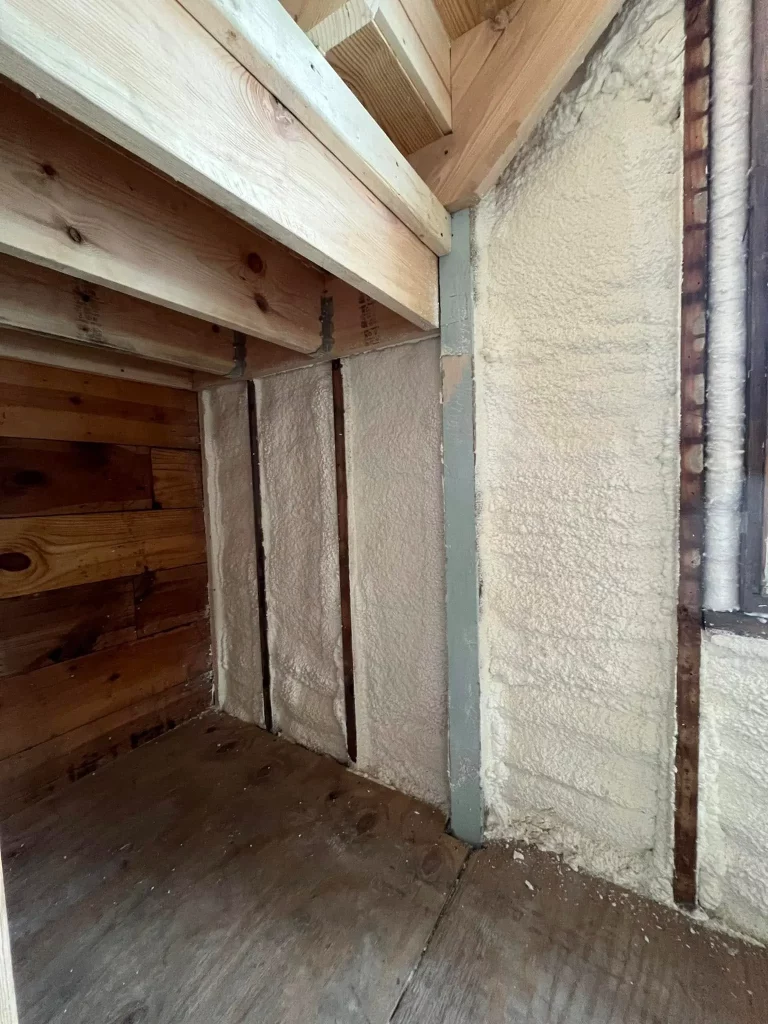
Excess moisture creates ideal conditions for mold growth, dust mites, and bacterial proliferation. Spray foam’s moisture-resistant properties prevent water vapor transmission while eliminating condensation-prone air leaks that contribute to humidity problems.
Closed-cell spray foam acts as a vapor barrier with permeance ratings below 1.0 perm, preventing moisture migration through building assemblies. This characteristic proves particularly valuable in basements, crawl spaces, and areas prone to humidity issues.
Bonus Tip: Install spray foam in crawl spaces to create a conditioned environment that eliminates moisture-related air quality problems. This approach reduces relative humidity levels by 15-30% compared to vented crawl space designs.
Spray foam installation creates a controlled indoor environment by eliminating pathways for common allergens. Pollen, dust, pet dander, and outdoor particulates cannot infiltrate through properly sealed building envelopes.
| Indoor Air Quality Improvements | Before Spray Foam | After Spray Foam |
|---|---|---|
| Particulate Matter (PM2.5) | 15-25 μg/m³ | 5-12 μg/m³ |
| Pollen Count | High seasonal variation | 60-80% reduction |
| Dust Accumulation | Weekly cleaning needed | Monthly cleaning adequate |
| Humidity Control | 40-70% RH fluctuation | 45-55% RH stable |
The National Institute of Standards and Technology reports that homes with comprehensive air sealing experience 40-60% fewer airborne allergens compared to conventionally constructed properties.
Modern spray foam formulations cure within 24-48 hours, eliminating long-term off-gassing concerns when properly installed. Third-party testing confirms that fully cured spray foam meets strict indoor air quality standards established by GREENGUARD and other certification bodies.
Professional installation ensures proper mixing ratios, application thickness, and curing conditions that prevent chemical odors or air quality issues. The cured foam becomes chemically inert and does not release volatile organic compounds into living spaces.
Bonus Tip: Schedule spray foam installation when you can vacate the property for 24-48 hours during the curing process. This precaution ensures optimal indoor air quality from day one.
Evaluate your home’s current air quality issues through professional testing that measures particulate levels, humidity, and air exchange rates. Properties with existing mold problems require remediation before spray foam installation to prevent encapsulating contaminated materials.
Consider your climate zone and specific moisture management needs. Closed-cell foam works best in high-humidity regions, while open-cell applications suit moderate climates where vapor transmission remains beneficial.
Assess your HVAC system’s capacity after air sealing improvements. Dramatically reduced air infiltration may require mechanical ventilation upgrades to maintain healthy indoor air quality standards.
Professional installation becomes critical for achieving advertised air quality benefits. Improperly applied foam can create thermal bridges, incomplete seals, or application defects that compromise performance.
South Chicago Insulation delivers comprehensive spray foam solutions designed to maximize air quality improvements:
Spray foam addresses infiltration-related air quality issues but cannot solve problems caused by indoor pollution sources, inadequate ventilation, or existing contamination. Comprehensive air quality improvement requires addressing multiple factors beyond air sealing.
Most homeowners observe reduced dust accumulation within 2-3 weeks and decreased allergy symptoms within 30-60 days. Humidity stabilization occurs immediately after installation completion.
Tightly sealed homes need controlled mechanical ventilation to maintain fresh air supply. Energy recovery ventilators provide filtered outside air while preserving energy efficiency gains from spray foam installation.
Spray foam insulation offers proven air quality benefits through superior air sealing performance, moisture control, and pollutant reduction. The investment delivers immediate improvements in indoor environmental quality while providing long-term health and comfort advantages.
Contact professionals who understand the relationship between building science and air quality management. Proper installation techniques and material selection ensure optimal performance that maintains healthy indoor environments for decades.
Transform your home’s indoor environment with professionally installed spray foam insulation systems. South Chicago Insulation combines advanced materials science with proven installation techniques to deliver measurable air quality improvements.
Schedule a comprehensive evaluation to identify your property’s specific air quality challenges and develop customized solutions. Contact South Chicago Insulation at [email protected] or call (779) 803-8025 to discuss how spray foam installation can create the healthy indoor environment your family deserves.
Professional-grade spray foam maintains its air barrier performance for 50+ years without degradation. The material’s cellular structure remains stable under normal temperature fluctuations, providing consistent air quality benefits throughout its service life.
Improperly installed spray foam can trap moisture or contaminants if existing problems aren’t addressed first. Professional assessment identifies underlying issues like mold growth or mechanical system deficiencies that require correction before foam application.
Chemical odors and airborne particles occur during application and initial curing phases. Occupants should vacate the property for 24-48 hours while foam cures completely, ensuring no exposure to installation-related air quality impacts.
Spray foam significantly reduces outdoor pollutant infiltration but doesn’t replace the need for mechanical air filtration. HVAC filters and air purifiers remain important for managing indoor-generated contaminants and maintaining optimal air quality.
Spray foam provides superior and permanent air sealing compared to caulking, weatherstripping, or plastic sheeting. Its expansive properties create complete barriers that other materials cannot achieve, resulting in greater air quality improvements and longer-lasting performance.

